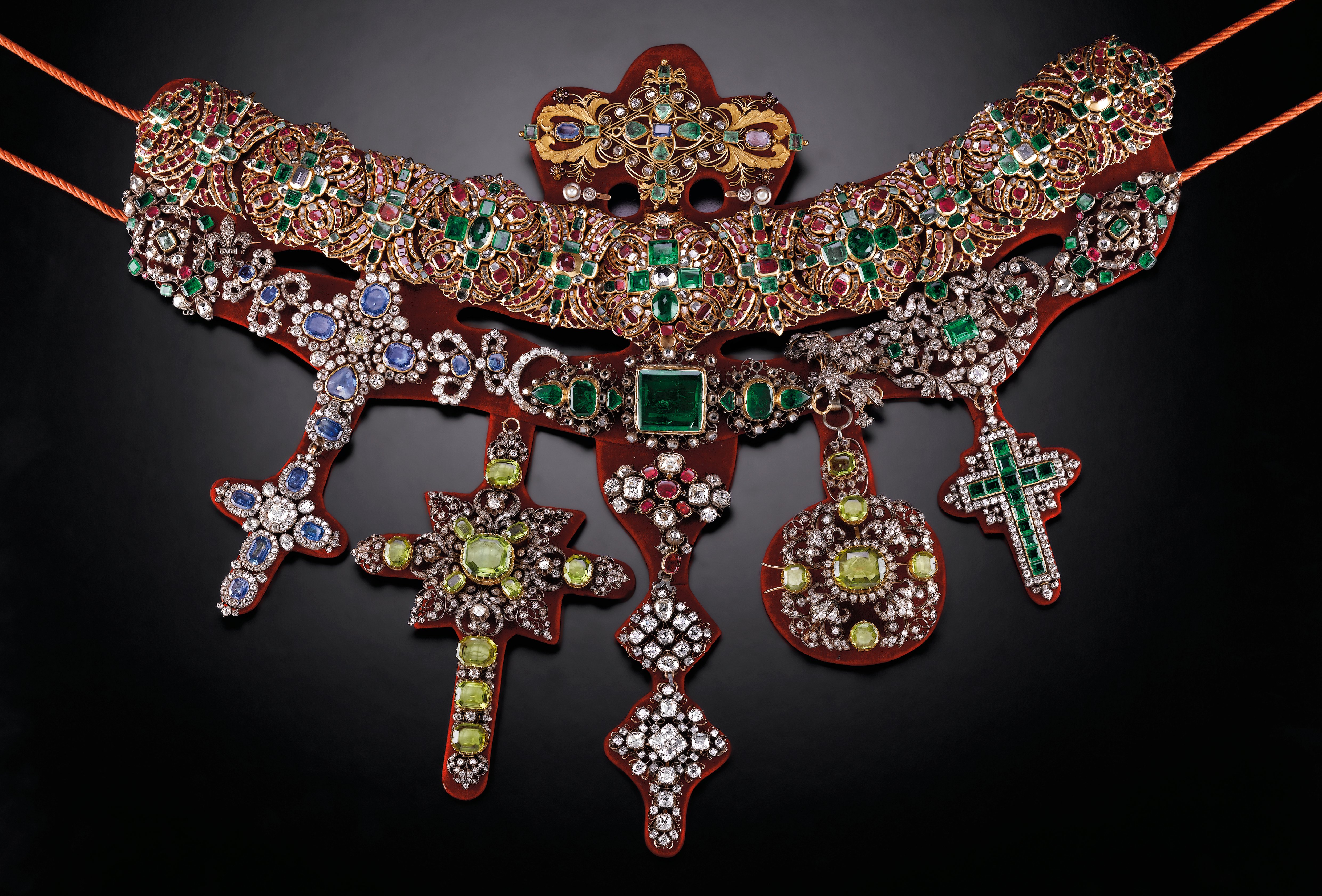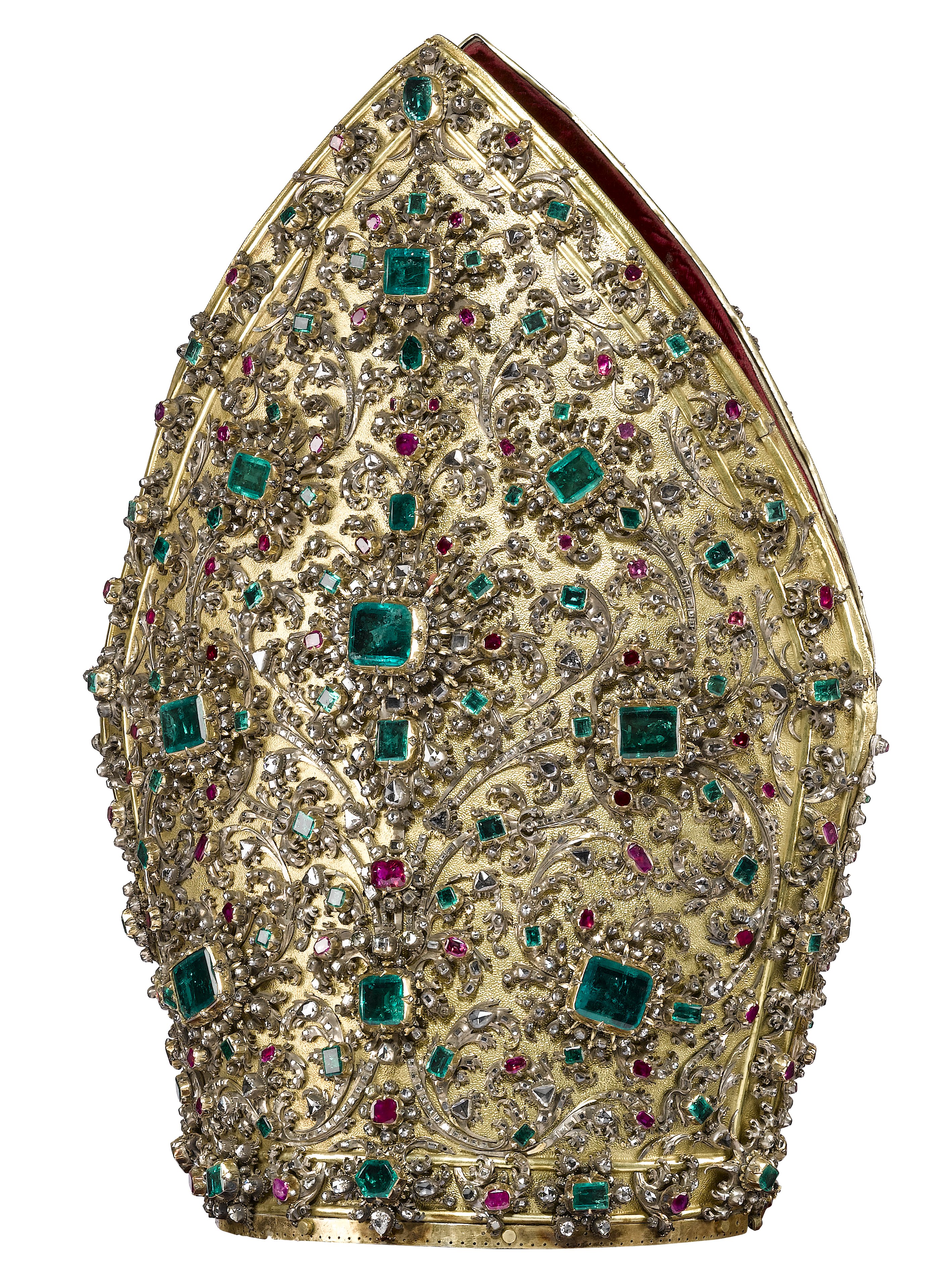From 19 March, the Maillol Museum in Paris invites you to come and admire a collection that deserves to be called exceptional because it is travelling outside Italy for the first time. This means that this exhibition is sure to be popular. Indeed, this is the first time that the jewels of San Gennaro leave Naples where they are kept.

San Gennaro, or St. January, is the patron saint of the city of Naples. He died as a martyr as a result of the persecution of Christians ordered by the Emperor Diocletian who ruled between 284 and 305 AD. Surprisingly, it is said that the blood of the martyr contained in two ampoules, and now coagulated, liquefies several times a year and that many Neapolitans consider the failures of this phenomenon as dark omens. But let’s leave the legend aside.
The unusual story of this treasure originated between 1526 and 1527, when the city of Naples was hit by war and the Black Death. It is said that the Neapolitans begged San Gennaro to help them. On 13 January 1527, a contract was signed before a notary between the people of Naples and the saint, who had been dead for more than 1200 years.
The contract stipulated that the saint should protect the city and its inhabitants from plagues such as epidemics and the eruption of Vesuvius. In return, the Neapolitans built a chapel for him in the city’s cathedral to honour him and set aside a treasure for him. In 1601, the Deputation of the Real Cappella del Tesoro di San Gennaro was established in Naples. The “Deputation”, a lay institution, is one of the most surprising and singular organisations active in Italy. Guardian of the chapel of the saint, it is made up of twelve members, ten from the nobility and two from the people. For four centuries, it has guaranteed the inalienability of the treasure of San Gennaro, made up of valuable works of art, the relics of the saint, and the maintenance of the chapel. It also ensures the transmission of the tradition concerning the history, the cult and the heritage of the patron saint of Naples.
Thus, what makes this treasure – which is one of the largest jewellery collections in the world – particularly astonishing is that it belongs, not to old ruling families, the Italian state or the Church, but to the entire people of Naples.

Chalice in gold, silver, diamonds, rubies and emeralds, made by the goldsmith Michele Lofrano in 1761. Donated by King Ferdinand IV. Preserved in the Treasure Museum of San Gennaro. Photo: Mattéo D’Eletto.

Ciborium in gold, coral and malachite, made in 1931 by Giovanni Ascione. Gift of Umberto II of Savoy. Preserved in the Treasure Museum of San Gennaro. Photo: Mattéo D’Eletto.

The necklace of San Gennaro is one of the most amazing pieces in the collection. Its creation began in 1679 when the Deputation decided to make a necklace to adorn the bust of the saint. It would use jewels donated to San Gennaro and kept in the collection. The design of the piece was entrusted to the goldsmith Michele Dato. In 1732, a ciappa, a kind of clasp, was added, made of several emeralds and diamonds and placed in the centre of the necklace. History added many other elements and in 1833 a brooch was added to the two existing rows. The work was entrusted to Mariano Imparato, the trusted goldsmith of the Deputation. Preserved in the Treasure Museum of San Gennaro. Photo: Mattéo D’Eletto.

Altar cross, made by an unknown Neapolitan goldsmith around 1707 according to the archives of the Deputation. It is made of silver, coral and golden filigree. Gift of Giovan Franscesco and Anna Lucrezia Spera. Preserved in the Treasure Museum of San Gennaro. Photo: Mattéo D’Eletto.

Episcopal cross, made around 1878, in gold, diamonds and emeralds. Gift of Umberto I and Margaret of Savoy. Preserved in the Treasure Museum of San Gennaro. Photo: Mattéo D’Eletto.

Mitre of San Gennaro, made in 1713 by the goldsmith Mattéo Treglia. It is made of gilded silver and contains 3326 diamonds, 168 rubies, 198 emeralds and 2 garnets. For the realization of this piece Mr. Treglia asked the help of the Borglo degli Orefici, the Neapolitan goldsmiths’ district. Several stones will delight gemologists: a large Ceylon ruby nicknamed “Lava of Vesuvius”, a pear-cut diamond which is historically one of the first 58-faceted cut diamonds and a superb collection of emeralds. Housed in the Treasure Museum of San Gennaro. Photo: Mattéo D’Eletto.
The exhibition will be held in Paris until 20 July 2014, so I can’t advise you enough to go. But a good advice, book your tickets well in advance!
See you soon!







